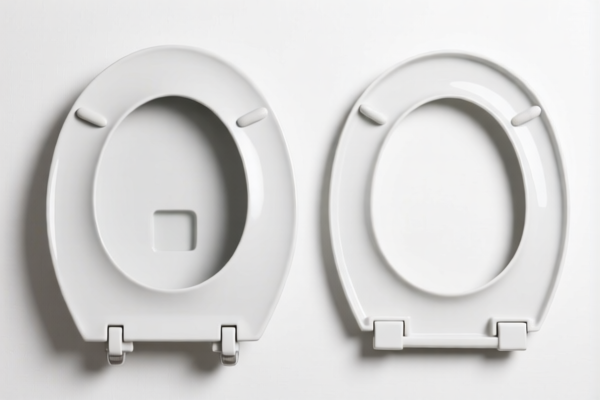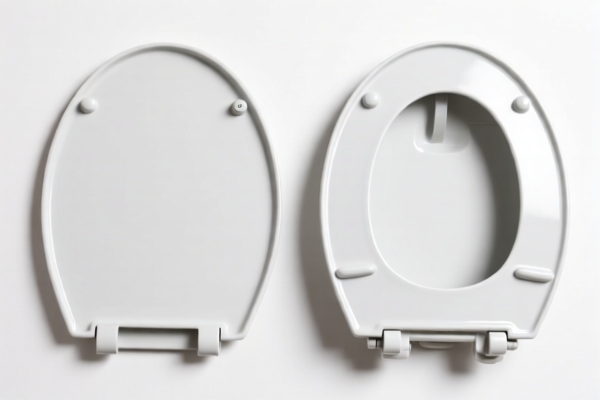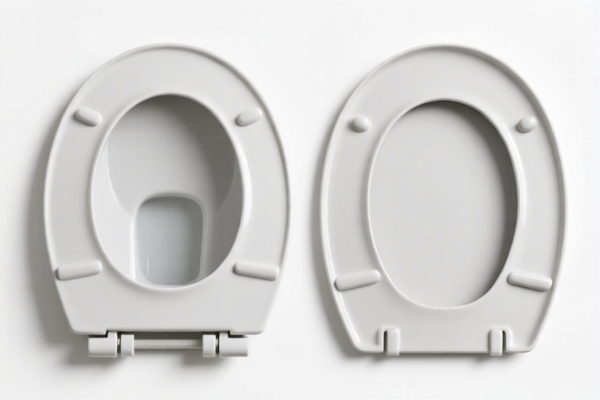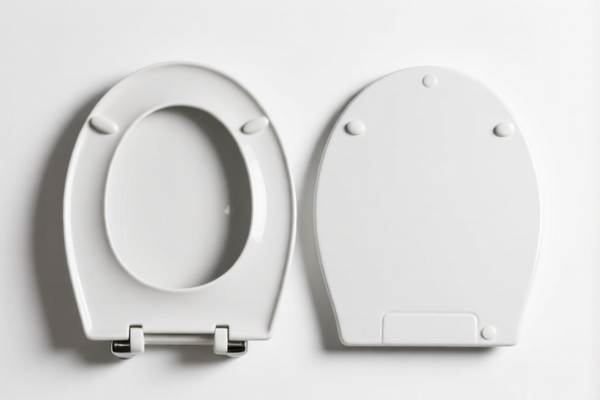| HS Code | Official Doc | Tariff Rate | Origin | Destination | Effective Date |
|---|---|---|---|---|---|
| 6910100015 | Doc | 35.8% | CN | US | 2025-05-12 |
| 6910100020 | Doc | 35.8% | CN | US | 2025-05-12 |
| 6914104000 | Doc | 55.0% | CN | US | 2025-05-12 |
| 6914108000 | Doc | 64.0% | CN | US | 2025-05-12 |
| 3922900000 | Doc | 61.3% | CN | US | 2025-05-12 |
| 3922100000 | Doc | 43.8% | CN | US | 2025-05-12 |




Toilet Tanks
A toilet tank is a large container mounted to the bowl of a toilet that holds the water used to flush solid and liquid waste. It is a crucial component of modern flush toilets, enabling efficient waste removal and hygienic sanitation.
Material
Toilet tanks are primarily constructed from:
- Vitreous China: The most common material, known for its durability, smooth surface (resistant to staining and bacterial adhesion), and relatively low cost.
- Plastic: Often polypropylene, used in less expensive models and for certain specialized applications (e.g., dual-flush tanks). Plastic tanks are lighter but can be more susceptible to cracking over time.
- Stainless Steel: Less common, offering superior durability and corrosion resistance, often found in commercial or high-end residential applications.
Purpose
The primary purpose of a toilet tank is to store a volume of water and release it rapidly into the toilet bowl to create a flushing action. This action carries waste away through the drainpipe.
Function
The function of a toilet tank relies on a series of interconnected components:
- Fill Valve: Controls the inflow of water into the tank, refilling it after each flush. Typically includes a float mechanism to stop the water when the tank reaches a predetermined level.
- Flush Valve: Located at the bottom of the tank, this valve opens to release water into the bowl when the flush lever is activated. Modern designs often utilize flapper valves or canister flush valves.
- Flapper/Canister: Seals the flush valve opening, preventing water from leaking into the bowl.
- Overflow Tube: Prevents the tank from overfilling by allowing excess water to drain into the bowl.
- Refill Tube: Replenishes water in the bowl after a flush to maintain the water level needed for siphoning.
- Lever/Button: Activates the flushing mechanism.
Usage Scenarios
Toilet tanks are integral to:
- Residential Plumbing: Standard fixture in homes, apartments, and other dwellings.
- Commercial Buildings: Used in restrooms of offices, schools, hospitals, and other public facilities.
- Industrial Settings: Specialized tanks may be used in industrial restrooms or sanitation facilities.
Common Types
- Gravity-Feed Tanks: The most common type, relying on the weight of the water to create flushing power.
- Pressure-Assisted Tanks: Utilize compressed air to increase flushing power, often found in commercial applications or for toilets with longer drain lines.
- Dual-Flush Tanks: Offer two flushing options – a partial flush for liquid waste and a full flush for solid waste – conserving water.
- One-Piece Tanks: Integrate the tank and bowl into a single unit, offering a streamlined appearance and easier cleaning.
- Two-Piece Tanks: The most traditional design, with a separate tank and bowl connected by bolts.
- Smart Tanks: Include features like automatic flushing, leak detection, and water conservation modes.
Toilet tanks, also known as flushing cisterns, fall under the category of sanitary ware components designed to store and release water for flushing toilets. They are typically constructed from porcelain, china, or plastics.
The following HS codes are relevant based on the provided information:
-
6910100015: Ceramic sinks, washbasins, washbasin pedestals, baths, bidets, water closet bowls, flush tanks, urinals and similar sanitary fixtures: Of porcelain or china. This code specifically covers flush tanks made of porcelain or china.
- 69: Chapter 69 – Ceramic products. This chapter broadly covers ceramic articles.
- 10: Heading 10 – Ceramic sinks, washbasins, etc. This heading narrows the focus to sanitary ware.
- 100015: Subheading 100015 – Specifically identifies flush tanks of porcelain or china.
- Tax Rate: Basic tariff: 5.8%, Additional tariff: 0.0%, Additional tariff after 2025.4.2: 30%. Total tariff: 35.8%.
-
6910100020: Ceramic sinks, washbasins, washbasin pedestals, baths, bidets, water closet bowls, flush tanks, urinals and similar sanitary fixtures: Of porcelain or china. This code also covers flush tanks made of porcelain or china, but categorized as 'Other water closet bowls'.
- 69: Chapter 69 – Ceramic products.
- 10: Heading 10 – Ceramic sinks, washbasins, etc.
- 100020: Subheading 100020 – Specifically identifies 'Other water closet bowls' including flush tanks of porcelain or china.
- Tax Rate: Basic tariff: 5.8%, Additional tariff: 0.0%, Additional tariff after 2025.4.2: 30%. Total tariff: 35.8%.
-
3922900000: Baths, shower baths, sinks, washbasins, bidets, lavatory pans, seats and covers, flushing cisterns and similar sanitary ware, of plastics: Other. This code covers flush tanks made of plastics.
- 39: Chapter 39 – Plastics and articles thereof.
- 22: Heading 22 – Plastic sanitary ware.
- 900000: Subheading 900000 – Specifically identifies 'Other' plastic sanitary ware, including flushing cisterns.
- Tax Rate: Basic tariff: 6.3%, Additional tariff: 25.0%, Additional tariff after 2025.4.2: 30%. Total tariff: 61.3%.
Customer Reviews
No reviews yet.